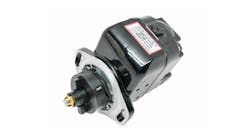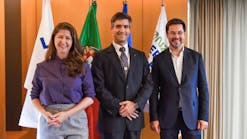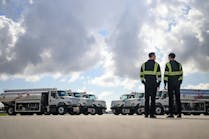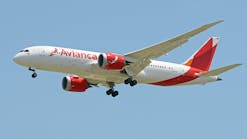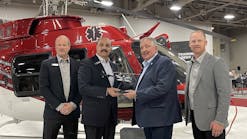By HOWARD ALTMAN and KAREN BRANCH-BRIOSO
The Tampa Tribune
St. Petersburg-Clearwater International Airport is a focus of an international investigation into the purchase of airplanes by a Mexican drug cartel.
Mexican authorities who arrested a top financier for the Sinaloa drug cartel uncovered the connection between the cartel and the purchase of two jets that took off from St. Petersburg-Clearwater International Airport on separate dates. One jet was seized, and the other crashed in Mexico. A total of nearly 10 tons of cocaine was found onboard the jets, according to Mexican authorities.
On April 5, 2006, a DC-9 left St. Petersburg-Clearwater International Airport, bound for Venezuela. Days later, it was seized in Mexico, where the Mexican army found 5.5 tons of cocaine.
Two months ago, a Gulfstream II flew out of the airport. Eight days later, it crashed in the Yucatan. Mexican authorities found 3.7 tons of cocaine onboard.
Florida Route Popular
Both planes were sold at the airport. Cartels are searching for aircraft because Caribbean trade routes from South America, via Mexico, to Florida are gaining in popularity among drug traffickers, according to one expert in Latin American drug trafficking.
Cocaine is increasingly being moved by air through Florida instead of the Southwest, according to Bruce Bagley, chairman of the department of International Studies at the University of Miami, who specializes in the Latin American drug trade.
"In the last 18 months to two years, there has been a return to the Caribbean drug routes with the drawdown because of the wars in Afghanistan and Iraq," said Bagley. Drug traffickers are finding it easier to fly between South America and Florida.
The result, he said, is that traffickers are increasingly looking for airplanes such as the ones sold at St. Petersburg-Clearwater.
"These aircraft seem to be linked to a growing trend," he said.
Although the planes probably didn't contain drugs while in the Tampa Bay area, investigators say both aircraft were purchased with cartel money and were used to carry cocaine, most likely from Colombia into Mexico. The wide-ranging investigation starts south of the border and extends into the Bay area, said a spokesman for the Drug Enforcement Agency.
The cocaine found on the two jets represents "a huge seizure," DEA spokesman Steve Robertson said.
The connection between the Sinaloa cartel and the sales of the planes is being scrutinized, he said.
"We are working closely with our Mexican counterparts," he said. "These are significant seizures of cocaine. I do know that there are leads that lead to Florida and your specific area, but I am not at liberty to discuss what those are. There are many aspects to this case, and it is still active."
The investigation comes at a time when the United States and Mexico are negotiating a half-billion-dollar drug-fighting campaign, dubbed Plan Mexico, in which the United States would provide Mexico with equipment such as helicopters as well as access to intelligence databases.
Cartel Fighting For Mexican Trade
Last week, Mexican police issued a warrant for Pedro Alfonso Alatorre Damy, whom they identified as the head of finances for the huge Sinaloa drug cartel. That man, authorities said, was part of a ring that used drug money to buy airplanes.
The Sinaloa cartel, also known as the Pacific cartel, is one of the organizations fighting for control of Mexico's burgeoning drug trade. The organization has been weakened recently by Mexican law enforcement efforts, according to Viviana Macias, spokeswoman for the Mexican Attorney General's Office.
Damy, according to the attorney general's office, was the manager of a cash exchange business that was raided based on information provided by the Mexican Ministry of Finance as well as U.S. authorities. That investigation uncovered laundered cash transfers from more than 70 people to the United States. The money was used, among other things, to help pay for the two jets, according to a news release from the attorney general's office.
Only one of the principals involved in the sale of the jets is talking.
Joao Malago said he has nothing to do with drug cartels.
The Brazilian businessman, who purchased the Gulfstream II in August, said he sold the 32-year-old twin-engine jet to a Fort Lauderdale-based pilot named Clyde O'Connor on Sept. 16. He e-mailed The Tampa Tribune an Aircraft Acceptance form he said contains O'Connor's signature and that of a second man, Gregory Smith.
Malago, who bought the plane with his partner Eduardo Dias Guimaraes for their Coconut Creek-based Donna Blue Aircraft company, said he chose St. Petersburg-Clearwater "because I have a close friend who has a hangar, so the plane was just waiting for delivery."
In telephone and e-mail interviews from Brazil, Malago said he sold the jet to O'Connor for $2 million.
Plane Taken To Fort Lauderdale
On the day the jet was sold, O'Connor and Smith, along with a pilot hired by Malago, flew the plane to Fort Lauderdale. Malago said O'Connor was going to use the plane to fly charters in Mexico.
But eight days later, on Sept. 24, the plane crashed in the Yucatan. Mexican officials are unclear how it crashed.
After the crash, Malago said he was contacted by an official from the U.S. Embassy in Brazil who asked about the jet and the drugs.
"We showed them the papers and tried to show them that everything was done by the law," he said. "We have the money; we delivered the plane. We have a bill of sale. We did everything right, but unfortunately, this one was a mess."
O'Connor has repeatedly refused to comment about the plane. He has owned a number of businesses, including air charters, that have since dissolved. He has also filed for bankruptcy twice, in 1997 and 1998, in South Florida, listing dozens of creditors, including a number of casinos.
Last month, O'Connor was detained by Canadian officials after a Cessna 210 he flew into Halifax Airport in Nova Scotia was searched and authorities found two Derringer pistols he failed to report, according to Laurie Gillmore, spokeswoman for Canada's Border Services Agency. O'Connor acknowledged he misled authorities, paid $3,500 in fines and court costs, and now has a criminal record in Canada, Gillmore said. The guns were confiscated.
No one involved in the sale of the other plane, a DC-9, is talking about that transaction anymore.
In April 2006, the 40-year-old jet sat on the tarmac of the St. Petersburg-Clearwater International Airport.
Royal Sons Inc., a registered aircraft dealer based at the airport, sold the plane in March.
Fred Geffon, president of Royal Sons, told the Tribune in May 2006 that the plane - which was once at the heart of a now-litigated effort to persuade people to invest in an aircraft-borne mobile phone service as well as homeland security products - was to be used by a Venezuelan air charter company.
Just after noon on April 5, 2006, the plane took off. Five days later, it landed in Mexico, where authorities seized it, finding 5.5 tons of cocaine in 128 black briefcases marked "private."
The plane roused suspicions with Mexican officials almost immediately after takeoff from an airport outside Caracas, Venezuela, according to Gen. Carlos Gaytan, operations subchief of the Mexican army.
The pilot fled after landing, but the Venezuelan co-pilot was arrested, Gaytan said.
Geffon and Jorge Corrales, the California man who brokered the sale, said they knew nothing about the cocaine. At the time, the men offered different accounts of who purchased the plane.
Geffon said he did not know who bought the jet, but Corrales said Geffon knew who bought the jet, and he obtained permits to fly the plane out of the United States. Geffon, he said, also arranged to have a crew fly the plane to Venezuela for delivery.
Efforts to reach Geffon for comment were unsuccessful. Corrales did not return several calls to his home.
Reporter Elaine Silvestrini contributed to this report. Editor Howard Altman can be reached at (813) 259-7629 or [email protected]
Photo credit: The Associated Press
Photo: Mexican authorities discovered 3.7 tons of cocaine in bags aboard this Gulfstream II after it crashed in the Yucatan. The plane was bought at St. Petersburg-Clearwater International Airport.
Photo: Pedro Alfonso Alatorre Damy
He's named as financier for the Sinaloa drug cartel.
Copyright © 2007, The Tampa Tribune and may not be republished without permission. E-mail [email protected]

